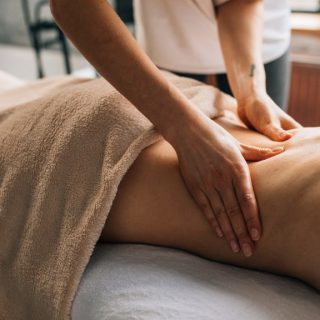The Synergistic Benefits of Deep Tissue Massage, Facial Treatments, and Cupping Therapy
In our increasingly demanding world, the pursuit of well-being often involves a holistic approach, recognizing the interconnectedness of the body and mind. Among the various therapeutic modalities available, deep tissue massage, facial treatments, and cupping therapy stand out for their unique and complementary benefits. Each offers a distinct pathway to rejuvenation, addressing physical tension, skin health, and overall vitality. When considered together, these treatments can create a powerful synergy, promoting profound relaxation, pain relief, and a renewed sense of balance.
Deep Tissue Massage: Unraveling Tension and Restoring Movement
Deep tissue massage Stirling, Scotland is a specialized massage technique that targets the deeper layers of muscle and fascia, the connective tissue that surrounds muscles, bones, and organs. Unlike gentler forms of massage that primarily focus on relaxation, deep tissue massage employs slow, firm strokes and concentrated pressure to address chronic muscle tension, knots (adhesions), and scar tissue. This makes it particularly beneficial for individuals experiencing persistent pain, stiffness, and limited mobility due to factors such as strenuous physical activity, poor posture, or injury.
One of the primary benefits of deep tissue massage is its ability to reduce chronic pain. By breaking down adhesions and releasing muscle tightness, this therapy can alleviate pain associated with conditions like lower back pain, sciatica, neck stiffness, and fibromyalgia. The sustained pressure helps to improve blood circulation, bringing oxygen and nutrients to the affected areas, which in turn promotes healing and reduces inflammation. Furthermore, deep tissue massage can stimulate the release of endorphins, the body’s natural pain relievers, further contributing to pain reduction.
Beyond pain relief, deep tissue massage plays a crucial role in improving flexibility and range of motion. Chronic muscle tension can restrict movement and make everyday activities challenging. By lengthening tight muscles and releasing fascial restrictions, this therapy allows for greater ease and fluidity of movement. This is particularly beneficial for athletes seeking to enhance performance and prevent injuries, as well as individuals recovering from physical trauma.

The benefits of deep tissue massage extend beyond the physical realm, offering significant stress and anxiety reduction. The focused, intentional touch can have a profound calming effect on the nervous system, promoting relaxation and a sense of well-being. By lowering levels of cortisol, the stress hormone, and increasing the release of serotonin and dopamine, neurotransmitters associated with feelings of happiness and relaxation, deep tissue massage can contribute to improved mood and mental clarity.
Moreover, deep tissue massage can aid in rehabilitating injuries by increasing blood flow to injured tissues, reducing swelling, and breaking down scar tissue that can impede healing. It can also help to restore proper muscle function and prevent compensatory movement patterns that can lead to further pain and dysfunction.
Facial Treatments: Nurturing Skin Health and Radiance
Best facial treatments in Stirling encompass a wide range of procedures designed to cleanse, exfoliate, nourish, and rejuvenate the skin of the face. Performed by trained estheticians, these treatments go beyond basic skincare routines, addressing specific skin concerns and promoting overall skin health and radiance.
A fundamental benefit of facial treatments is deep cleansing. Throughout the day, our skin is exposed to pollutants, dirt, and makeup that can clog pores and lead to breakouts. Professional facials utilize specialized techniques and products to thoroughly cleanse the skin, removing impurities that at-home cleansing may miss. This deep cleansing helps to prevent acne, blackheads, and whiteheads, resulting in a clearer and healthier complexion.
Exfoliation is another key component of most facial treatments. The removal of dead skin cells from the surface reveals fresher, brighter skin underneath. Various exfoliation methods, such as scrubs, chemical peels, and microdermabrasion, can be employed depending on skin type and concerns. Regular exfoliation can improve skin texture, reduce the appearance of fine lines and wrinkles, and enhance the absorption of skincare products.
Facial treatments also focus on hydration and nourishment. Masks, serums, and moisturizers tailored to individual skin needs are applied to replenish moisture levels and deliver essential nutrients and antioxidants. This can combat dryness, improve skin elasticity, and promote a healthy, glowing complexion. Specific ingredients can target concerns such as hyperpigmentation, sensitivity, and signs of aging.
Furthermore, many facials include facial massage, which offers a multitude of benefits. Massage stimulates blood circulation, bringing oxygen and nutrients to the skin cells, which can improve skin tone and radiance. It can also promote lymphatic drainage, helping to reduce puffiness and eliminate toxins. Additionally, facial massage can relax facial muscles, potentially reducing the appearance of tension lines and promoting a more youthful look.
Beyond the physical benefits, facial treatments provide an opportunity for relaxation and stress relief. The calming environment, gentle touch, and soothing aromas can create a sense of tranquility, allowing individuals to unwind and de-stress. This can have a positive impact on overall well-being, complementing the physical improvements in skin health.
Cupping Therapy: Facilitating Healing and Restoring Balance
Cupping in Stirling is an ancient healing technique that involves placing cups on the skin to create suction. This suction draws the skin and superficial muscle layer into the cup, promoting blood flow, reducing inflammation, and facilitating healing. While various types of cupping exist, including dry cupping (using suction only) and wet cupping (involving superficial skin puncturing to draw out a small amount of blood), the core principle involves creating negative pressure to stimulate the body’s natural healing processes.
One of the primary benefits of cupping therapy is pain relief. The suction created by the cups can help to lift and separate tissues, reducing pressure on pain receptors and easing muscle tension. It is often used to alleviate back pain, neck pain, headaches, and other musculoskeletal discomforts. By increasing blood flow to the affected areas, cupping can deliver oxygen and nutrients while removing waste products, contributing to pain reduction and tissue repair.
Cupping therapy is also known for its ability to improve blood circulation. The suction draws blood to the surface of the skin, encouraging the flow of fresh, oxygenated blood to the treated area. This enhanced circulation can promote healing, reduce inflammation, and improve the overall health of the tissues. It can be particularly beneficial for areas with poor circulation or chronic tension.
Furthermore, cupping therapy is believed to aid in detoxification. By improving circulation and lymphatic drainage, it may help the body to eliminate toxins and metabolic waste products more efficiently. This can contribute to a reduction in inflammation and an overall improvement in well-being.
The gentle pulling sensation of cupping can also promote muscle relaxation. It can help to release tight muscles and fascia, reducing stiffness and improving flexibility. This makes it a valuable tool for athletes, individuals with chronic muscle tension, and those recovering from injuries.
While the mechanisms are still being researched, many individuals experience a sense of enhanced well-being and relaxation after cupping therapy. The unique sensation of the suction and the subsequent release of tension can be deeply soothing and contribute to a feeling of physical and mental ease.
The Synergistic Effects: A Holistic Approach to Wellness
When deep tissue massage, facial treatments, and cupping therapy are integrated into a holistic wellness plan, their individual benefits can be amplified, creating a powerful synergy that addresses multiple aspects of health and well-being.
For instance, someone experiencing chronic back pain might benefit from a deep tissue massage to release deep muscle tension and improve circulation in the affected area. Incorporating cupping therapy can further enhance blood flow and reduce inflammation, providing additional pain relief. Simultaneously, regular facial treatments can address stress-related skin issues, promoting relaxation and a sense of self-care that complements the physical healing.
The combined effects can lead to a more profound sense of relaxation, as physical tension is released, skin health is improved, and overall balance is restored. Pain relief can be more significant and long-lasting when deep tissue work and cupping address the underlying musculoskeletal issues. The stress-reducing benefits of all three therapies can contribute to improved sleep, mood, and overall quality of life.
Furthermore, these treatments can complement each other in promoting the body’s natural healing abilities. Deep tissue massage and cupping enhance circulation and reduce inflammation, creating an optimal environment for tissue repair. Facial treatments contribute to skin health, which is an important aspect of the body’s overall defense and detoxification processes.
In conclusion, deep tissue massage, facial treatments, and cupping therapy offer a diverse range of benefits that address physical tension, skin health, and overall well-being. When utilized individually, they provide valuable therapeutic effects. However, when integrated thoughtfully, these modalities can create a powerful synergy, promoting profound relaxation, significant pain relief, enhanced circulation, improved skin radiance, and a renewed sense of balance and vitality. Embracing this holistic approach can be a transformative step towards optimal health and well-being in our modern, demanding world.

